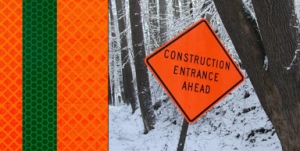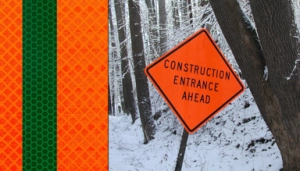
In industrial colorimetry of QA non-luminous materials, assumptions are made that light reflected from or transmitted through a surface is relatively uniform, with only diffuse and specular components. To promote inter-instrument agreement, the CIE geometries for collecting the reflected or transmitted signal of non-luminous materials are standardized into directional and diffuse sphere types.

Prismatic highway signage materials tend to reflect light more in a retro-reflective direction than in any other. This is the type of material where a BRDF scattering profile would be useful to know in the research stage.

